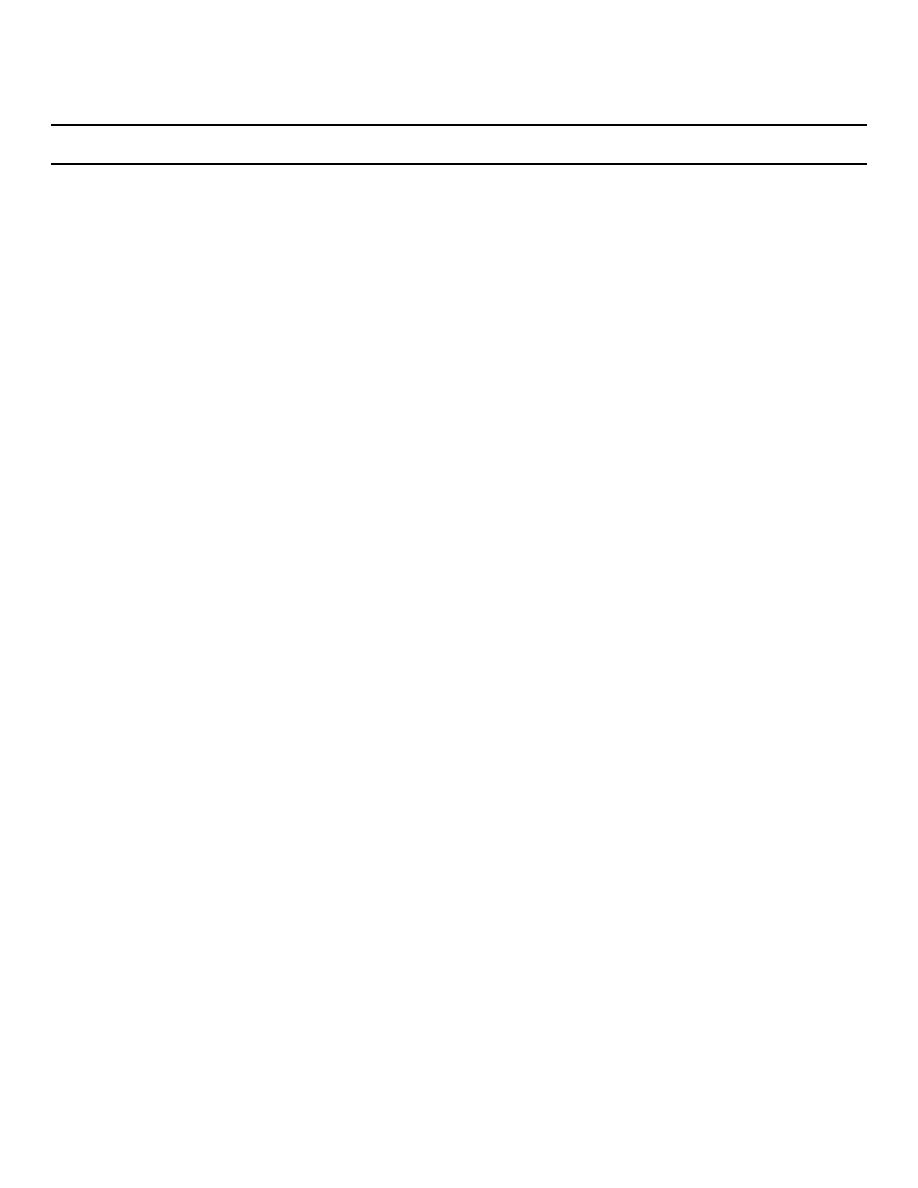 |
|||
|
|
|||
|
Page Title:
Table 7-2. Insulation Clearance for Solder Joints |
|
||
| ||||||||||
|
|
 TM 750-245-4
Table 7-2. Insulation Clearance for Solder Joints
Wire
Insulation
Clearance
diameter
Minimum
maximum
32 to 24
1/32
3 x OD
22 to 12
1/32
2 x OD
10 or larger
1/32
1 x OD
degrees or more than 360 degrees. Where three or
(4) Feed-through terminals. The terminating
more terminals in a row require a continuous jumper, a
end of a wire inserted through a feed-through terminal
solid bus may be wrapped 360 degrees, and continued
shall be hooked over the lip of the terminal not less than
from terminal to terminal. The first wire on each
one-sixteenth inch. Not less than one-sixteenth inch of
terminal shall be placed parallel to the header nearest
the connection hook shall be soldered tangent to the
the terminal mounting surface. Each additional wire
terminal.
shall be placed next thereto, continuing outward from
(5) Printed circuit terminating. Components
the terminal mounting surface.
Maximum spacing
shall be installed opposite to the side to be soldered.
between wires and between wire and header is
Leads shall be bent flat to the pad and along the
recommended. There shall be no overlapping of wires.
conductor surface.
Components having pin type
Wrap may be clockwise or counter-clockwise; however,
connections shall be mounted with pins extending
on multiple connections all wraps must be in the same
straight through the printed circuit board.
When
direction, unless required by design limitations. When
component lead wire diameter, length, or composition
soldering the second joint on double ended terminals,
prevent bending, or when specified in Department of the
precaution shall be taken to prevent remelt and fracture
Army publications, the lead shall be treated as a pin
of the first joint.
type. "Double sided printed circuit boards employing
(2) Slotted or bifurcated terminals. Order of
eyelets for the interfacial circuit connections shall have
preferred terminations:
the eyelets soldered to the pad on both sides of the
(a) Side route connection. The wire
board as well as the usual mechanical bradding. Double
sided printed circuit boards employing plated through
shall enter the mounting slot at a right angle and be
holes for interfacial circuit connections shall have a
terminated with a 90-120 degree bend. A bend of 180
continuous plug of solder through the hole. The hole
degrees is permitted when design requires mechanical
pads on both sides of the board shall be completely
holding prior to soldering. In no instance shall the
wetted by the solder 360 degrees around the periphery
conductor extend beyond the outside diameter of the
of the hole."
terminal, except for the point of entry. The direction of
the 90-degree bend on each additional wire shall
alternate.
Maximum space between wires is
7-11. Rejection Criteria
recommended.
Evidence of any defects, including, but not limited to the
(b) Bottom route connection. The wire
following, shall be cause for rejection:
shall terminate with a 90-degree bend.
a. Charring, burning, or other damage to
(c) Top route connection. The wire
insulation.
shall extend the full length of the terminal forks. When
b. Splattering of fluz or solder on adjacent
the ratio of slot size to wire size is greater than 1: 1, the
connections or components.
wire should be accompanied by a tinned filler wire
c. Solder points (peaks).
during the soldering operation to help hold the wire in
d. Pits, scars, or holes.
position, or the wire can be doubled back. A large wire
which fills the slot will require only solder fillets for
e. Excessive solder which obscures the connection
retention. Multiple top route connections shall not be
configuration.
used unless specified in Department of the Army
f. Excessive wicking.
publications.
g. Loose leads or wires.
(3) Hook or perforated terminals. The wire
h. Cold solder connections.
shall be attached to the hook or perforated terminal by
i. Rosin solder connection.
forming the tinned wire to at least 90-degrees angle.
j. Fractured solder connection.
Perforated terminals to which wire sizes ACG 16 or
larger are to be attached may be connected straight
k. Cut, nicked, stretched, scraped leads, or wires.
through.
solder, splash, dirt, etc.).
7-8
|
|
Privacy Statement - Press Release - Copyright Information. - Contact Us |